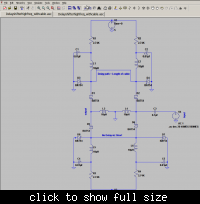crazyboy
Newbie level 6
Hi friends can any one suggest a schematic of a wide band (30-500MHz) analog time delay circuit? I need a maximum time delay of 5ns with steps of few pico seconds. I will be very much thankful:-D.
Follow along with the video below to see how to install our site as a web app on your home screen.
Note: This feature may not be available in some browsers.
Hi friends can any one suggest a schematic of a wide band (30-500MHz) analog time delay circuit? I need a maximum time delay of 5ns with steps of few pico seconds. I will be very much thankful:-D.


Hi I don't know how to do VSWR simulation in LTSPice. I Googled it and found nothing helpful. If you know how to do it can know explain briefly? Thanks in advance...
Hi I don't know how to do VSWR simulation in LTSPice. I Googled it and found nothing helpful. If you know how to do it can know explain briefly? Thanks in advance...